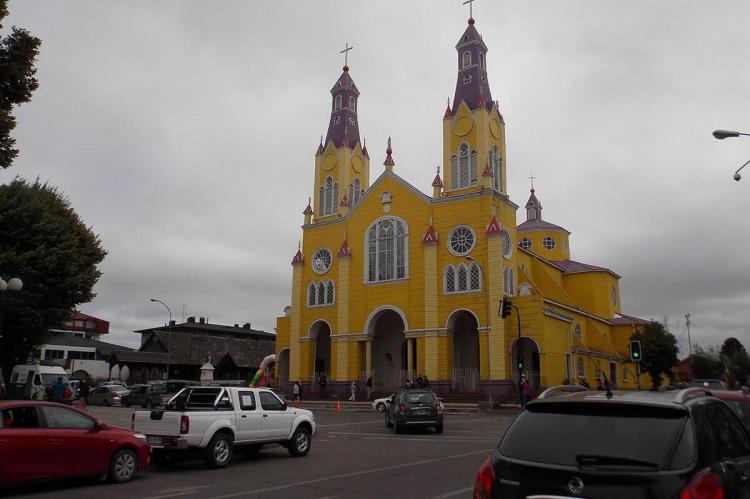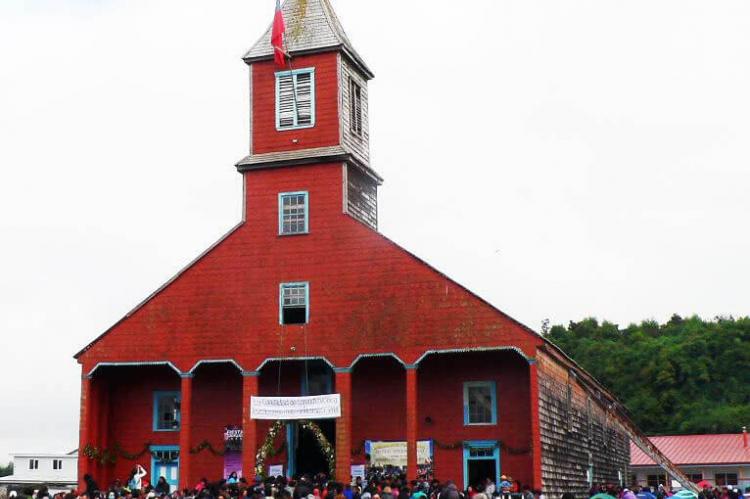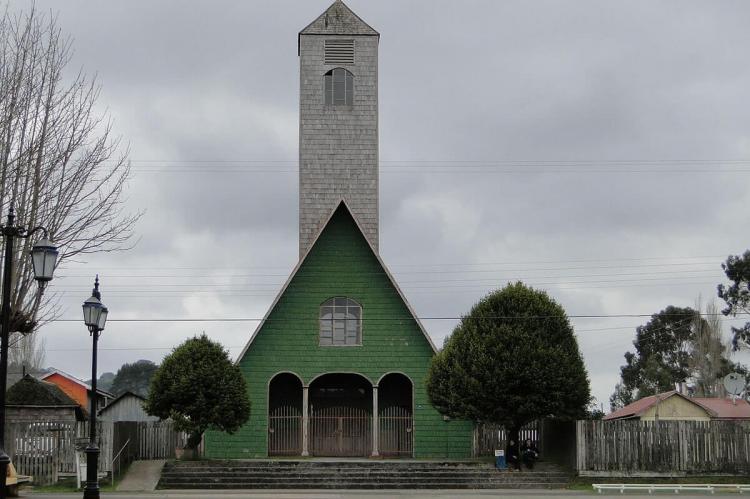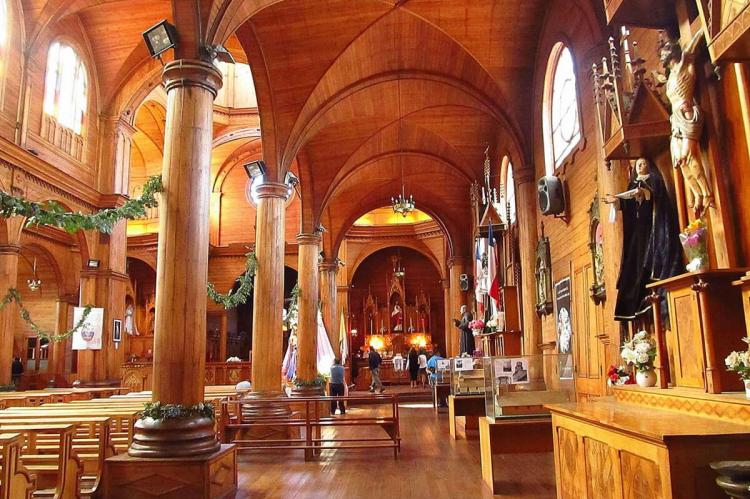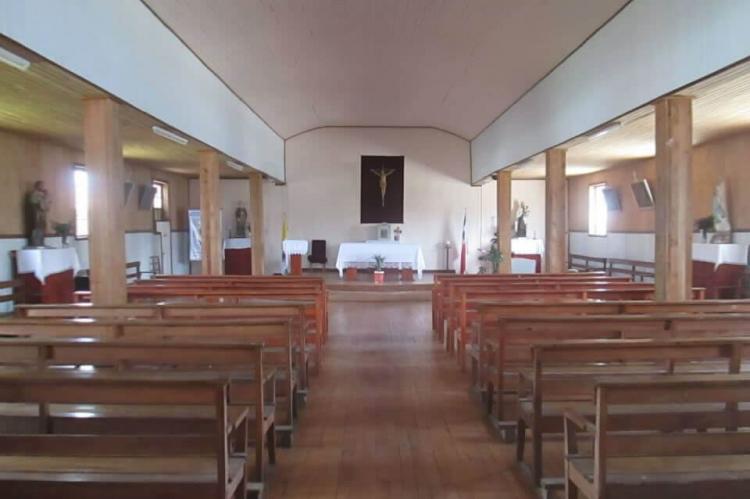Churches of Chiloé (Chile)
The Churches of Chiloé are found in the Chiloé Archipelago, off the coast of Chile's Los Lagos Region. This unique ensemble of about 70 churches was built within a "Circular Mission" framework introduced by the Jesuits in the 17th century and continued by the Franciscans in the 18th and 19th centuries.
The Churches of Chiloé
Guardians of History, Culture, and Faith
Nestled within the Chiloé Archipelago off the coast of Chile's Los Lagos Region, the Churches of Chiloé embody a captivating testament to the convergence of history and architectural prowess. This unique ensemble, comprising about 70 churches, emerged from the visionary "Circular Mission" initiated by the Jesuits in the 17th century and perpetuated by the Franciscans in subsequent centuries.
Historical Significance
Steeped in history dating back to the 17th century, the churches mark the Spanish colonization era, witnessing the crucial role of Jesuit and Franciscan missionaries in their establishment. These religious structures, born from the collaboration of local communities, showcase the ingenious capabilities of Chiloé's inhabitants in working with wood.
Architecture and Culture
Emerging in the 18th and 19th centuries, during the Chiloé Archipelago's Spanish colonial era, these churches embody the fusion of Spanish Jesuit culture and indigenous traditions, epitomizing the essence of mestizo culture. Diverging from classical Spanish colonial architecture, the churches are entirely constructed from native timber, utilizing wood shingles extensively.
Administration and Conservation
Integral to the Catholic Church's Diocese of Ancud, the sixteen Churches of Chiloé are administered by the Bishop of Ancud and parish priests. To ensure their preservation and enhancement, the Friends of the Churches of Chiloé Foundation, a private entity under the leadership of the Bishop, was established. Challenges such as deterioration due to weather, wood-eating insects, and earthquakes are met with ongoing conservation efforts by local communities, government agencies, and international organizations.
UNESCO Recognition
In the year 2000, UNESCO bestowed World Heritage status upon the Churches of Chiloé, acknowledging their cultural and historical importance. The designation encompasses 16 churches distributed across the archipelago, each contributing to the unique narrative of Chiloé's religious and architectural heritage.
Notable Churches include:
- Iglesia San Francisco de Castro, Castro:
- The oldest church on the archipelago dates back to the 17th century.
- Features a wooden exterior adorned with vibrant colors and intricate carvings.
- Iglesia de Nuestra Señora de Gracia, Rilán:
- Renowned for its unique boat-shaped structure, resembling an inverted ship hull.
- Houses a stunning array of religious artifacts and statues.
- Iglesia Santa María de Loreto, Achao:
- The oldest surviving wooden church in Chiloé dates back to 1730.
- Displays a captivating mix of Baroque and Chilote architectural elements.
The sixteen churches deemed outstanding examples and registered as part of the World Heritage Site are concentrated in the central-eastern zone of the archipelago.
- Iglesia San Francisco de Quinchao, Quinchao
- Iglesia San Francisco de Castro, Castro
- Iglesia de Nuestra Señora de Gracia, Rilán
- Iglesia de Señora de Gracia de Nercón, Nercón
- Iglesia de Aldachildo or Iglesia de Jesús Nazareno, Aldachildo
- Iglesia San Antonio de Padua de Ichuac, Ichuac
- Iglesia San Francisco de Detif, Detif
- Iglesia San Ignacio de Loyola de Vilupulli, Vilupulli
- Iglesia San Carlos de Chonchi, Chonchi
- Iglesia Santa Rosa de Lima de Tenaún, Tenaún
- Iglesia San Francisco de Colo, Colo
- Iglesia San Juan Bautista de San Juan, San Juan
- Iglesia Nuestra Señora de los Dolores de Dalcahue, Dalcahue
- Iglesia San Antonio de Chellín, Chellín
- Iglesia Jesus Nazareno de Caguach, Caguach
- Iglesia Santa María de Loreto de Achao, Achao
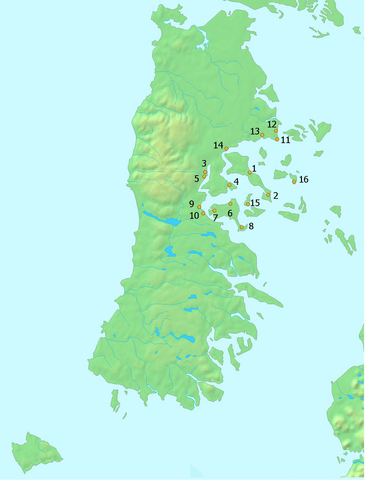
Conclusion
The Churches of Chiloé stand as resilient guardians of Chiloé's history, culture, and faith. Their UNESCO World Heritage status highlights their architectural significance and emphasizes their profound role in the Chilote people's daily lives. As these wooden masterpieces continue to weather the passage of time, they remain iconic symbols of Chiloé's rich and diverse cultural heritage.

